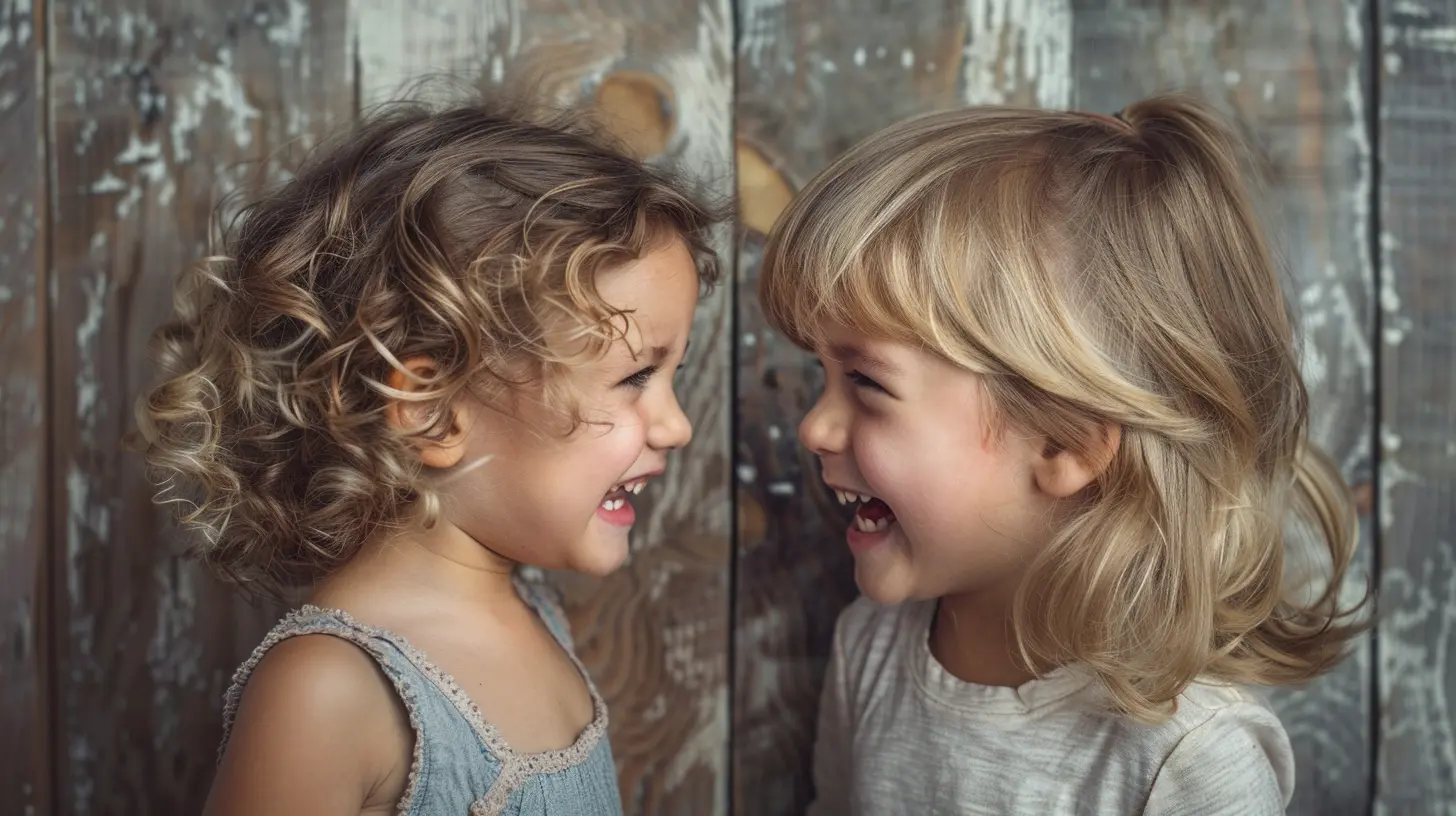Handling Tantrums with Compassion: Modeling Empathy for Your Kids
23 August 2025
Ah, tantrums. Those delightful symphonies of screams, tears, and flailing limbs that make you question every life choice that led to this moment. If you’re a parent, you've probably experienced one (or a hundred). They're loud, they're messy, and they have an uncanny ability to strike at the most inconvenient moments—like in the middle of a crowded grocery store or just as you’re about to enjoy your first sip of coffee.
But before you completely rethink the idea of parenthood, let's talk about handling these meltdowns with a little thing called compassion. Yes, I know—it’s tempting to match their tantrum with one of your own, but trust me, modeling empathy is the key to surviving (and even thriving) through these emotional tidal waves. 
Why Do Kids Throw Tantrums?
Before we start talking about how to handle tantrums, let's get one thing straight: kids don’t throw tantrums just to ruin your day. (Shocking, right?) They’re not plotting against you in a secret toddler conspiracy. Tantrums happen because:- They haven't mastered emotional regulation. (Imagine feeling a strong emotion but not knowing how to handle it. Oh wait, that happens to adults too.)
- They’re overwhelmed, tired, hungry, or frustrated. You know how cranky you get when you're running on no sleep and haven't eaten? Yeah, kids feel that too—except they express it by dramatically throwing themselves on the floor.
- They lack the vocabulary to express themselves. Instead of saying, "Mother, I am feeling quite distressed due to your refusal of a second cookie," they instead choose to scream at a decibel that only dogs can hear.
Bottom line? Tantrums are a normal, developmentally appropriate part of childhood. But how you react makes all the difference. 
The Art of Responding with Empathy (Even When You Want to Scream)
1. Take a Deep Breath (Or Ten)
First things first: before you even attempt to handle your child's meltdown, check yourself. If you go into the situation already irritated, congratulations! You’ve just added fuel to the toddler fire. Instead, take a deep breath. Channel your inner Zen master. Remind yourself that you are the adult in this situation (even if your child is acting more like a tiny dictator).2. Acknowledge Their Feelings (Even If They’re Ridiculous)
Your child isn't throwing a fit for fun (although it may seem that way). They genuinely feel something, even if that something is outrage over having to wear pants. Instead of brushing off their emotions, acknowledge them.Try saying:
- "I see that you're really upset right now."
- "I know you really wanted that toy, and it's hard to hear 'no'."
This validates their feelings without caving to their demands. Because let’s face it—buying them candy to stop their tantrum is like giving caffeine to an already hyperactive squirrel.
3. Stay Calm and Avoid the Power Struggle
Toddlers have an amazing ability to drag you into an emotional wrestling match. Don’t engage. If you start yelling, congratulations—you’ve just joined the tantrum club. Stay calm, steady, and in control (even if your internal monologue is full of expletives).Instead of shouting, try using a calm and firm tone:
- "I understand you're upset, but I can't let you hit me."
- "I hear that you’re mad, but we don’t scream in the store."
They might not like it, but modeling calm behavior teaches them how to regulate their own emotions.
4. Offer Choices (Because Everyone Likes a Little Control)
Tantrums often happen because kids feel powerless. Giving them small choices helps them regain a sense of control without turning you into a full-time servant.For example:
- Instead of “You have to put on your shoes now”, say: “Do you want to wear the red shoes or the blue ones?”
- Rather than “It’s bedtime”, try: “Do you want to read one book or two before bed?”
See? Still getting what you want, but now they feel like they had a say in it. Sneaky, right?
5. Use Distraction Like a Pro
Sometimes, the best way to handle a tantrum is a good old-fashioned distraction technique. (Yes, this works on adults too—ever handed a grumpy person a cup of coffee and watched their mood do a 180?)Change the subject, introduce a new activity, or suddenly become fascinated by something nearby:
- “Wow, did you see that big truck outside?”
- “Oh no! Where did your teddy bear go?!”
Sometimes kids just need a little shift in focus to move on from their emotional breakdowns.
6. Teach Emotional Words
Instead of letting your child scream their frustrations into the void, teach them words for their emotions. This helps them express themselves in a way that doesn’t involve an ear-piercing shriek.Try:
- "Are you feeling frustrated because you can’t have the toy?"
- "It looks like you’re really sad. Do you need a hug?"
Once kids learn that words can express their feelings, they’ll (hopefully) use them instead of launching into full-blown temper tantrums.
7. After the Storm, Talk It Out
Once the tantrum has blown over (and you've recovered from the trauma), take a moment to talk with your child about what happened.You can ask:
- “What made you feel so upset?”
- “Next time, how can we use our words instead of screaming?”
This reinforces the idea that emotions are okay, but tantrums don’t have to be the only way to express them. 
What NOT to Do During a Tantrum
Now that we've covered the must-dos, let’s talk about what NOT to do (unless you enjoy making things worse).❌ Don’t Ignore Big Feelings
Ignoring your child’s emotional distress won’t make it disappear. They need help navigating their emotions—not to be left in a puddle of frustration.❌ Don’t Lecture Mid-Tantrum
Trying to reason with a screaming toddler is like explaining quantum physics to a goldfish. Save the life lessons for when they’ve calmed down.❌ Don't Give In Just to End the Tantrum
Yes, handing them the candy bar will stop the screaming—for now. But guess what? They just learned that throwing a fit = getting what they want. Good luck with that next time.
The Big Picture: Modeling Empathy for Your Kids
Handling tantrums with compassion isn’t just about surviving your child's emotional rollercoasters—it’s about teaching them how to manage feelings, navigate frustration, and communicate in a healthy way.Your child watches and learns from you. If you meet their chaos with calm, they’ll eventually learn to do the same (even if it takes 372 tantrums first).
So next time your little one throws themselves on the floor because you gave them the wrong color cup, take a breath, channel your inner parenting guru, and remember: this too shall pass.
And if all else fails? Well, there’s always coffee. And chocolate. Lots of chocolate.
all images in this post were generated using AI tools
Category:
Teaching EmpathyAuthor:

Tara Henson
Discussion
rate this article
1 comments
Lincoln Sanchez
Compassion fuels understanding growth!
September 11, 2025 at 4:28 AM

Tara Henson
Absolutely! Compassion is key in fostering empathy and understanding in our children as they navigate their emotions.


